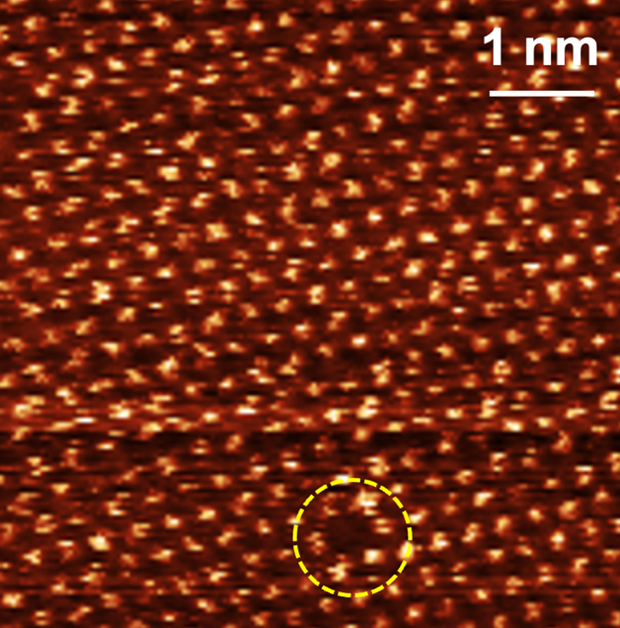
An atomic-resolution image of MoS2 acquired by Baykara Lab researchers, where bright dots represent individual sulfur atoms and a missing sulfur atom is highlighted by the dashed circle.
Thanks to their extremely small dimensions and attractive electronic properties, two-dimensional (2D) materials are prime candidates for revolutionizing the semiconductor industry as the primary building blocks in next-generation electronic devices. On the other hand, atomic-scale structural defects often lead to sub-ideal performance, hindering reliable operation under practical conditions.
Working with an international group of scientists from Canada, China, and Japan, Prof. Mehmet Baykara and his team have now shown that a non-oxidizing superacid treatment leads to a drastic improvement in the mechanical reliability and electronic uniformity of monolayer molybdenum disulfide (MoS2), a semiconducting 2D material with significant potential for electronic applications. As described in an article published in Nature Communications [1], Baykara’s team (comprising graduate student Gokay Adabasi and undergraduate researcher Andrew Grishko) has utilized their atomic-resolution conductive atomic force microscopy (C-AFM) method to show that chemical treatment leads to elimination of “midgap states” caused by sulfur vacancies in MoS2, resulting in a markedly more homogenous distribution of electronic properties – an ideal attribute for reliable device applications. Continuing efforts in Baykara Lab involve an expansion of their C-AFM method to more exotic electronic materials, including but not limited to 2D metal oxides.
[1] Kumral et al., Mechanically reliable and electronically uniform monolayer MoS2 by passivation and defect healing, Nature Communications 16, 7105 (2025).



